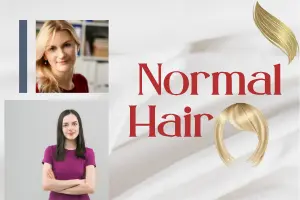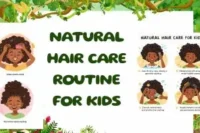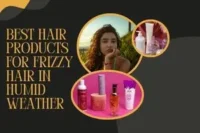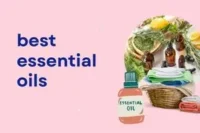Coily Hair Care Secrets for Beautiful, Bouncy Curls
Published: 21 Oct 2024
Coily hair, often seen as the tightest curl pattern in the curly hair family, is like a crown full of personality and bold texture. It’s gorgeous, but let’s be honest: it can also be tricky to manage. If you’ve ever stared at your curls, wondering why they act the way they do or struggled to find products that work, you’re not alone.
This guide is for everyone with coily hair who wants simple, effective care tips to embrace and maintain their natural texture with confidence. Let’s break down what makes coily hair unique, how to care for it, and which styling products truly make a difference.
Understanding Coily Hair
Curly hair, especially coily types like Type 4, features tight curls that range from S-shaped spirals to Z-shaped zigzags. These curls are fragile, fine, and tend to dry out easily. Why? Because the natural oils from the scalp can’t travel easily down the hair shaft.
Why Structure Matters
The tight curl pattern creates a beautiful texture but also leads to shrinkage, breakage, and moisture loss. That’s why coily hair requires a gentler, more intentional care approach.
This structure is what makes moisture retention so important and why a good hair care routine matters.
Washing Coily Hair with Care
Washing coily hair requires a gentle, sulfate-free cleanser to preserve natural oils and prevent dryness. Detangling with Hair Brushes during conditioning helps reduce breakage and maintain healthy curls.
Handle Your Hair Gently
Each strand is delicate. During cleansing, avoid rough rubbing or excessive tugging. Always detangle when wet and conditioned to reduce breakage.
Sectioning Makes It Easier
Divide your hair into 4–6 sections before washing. This helps you focus and makes cleansing and detangling much easier and less stressful.
The Importance of Moisture
Moisture is essential for maintaining strong, shiny, and resilient hair—especially for textured or dry hair types. One of the key dry hair care tips is using tools like Hair Brushes to help distribute moisture evenly, as shown in the image below, which illustrates how hydration supports overall hair health.
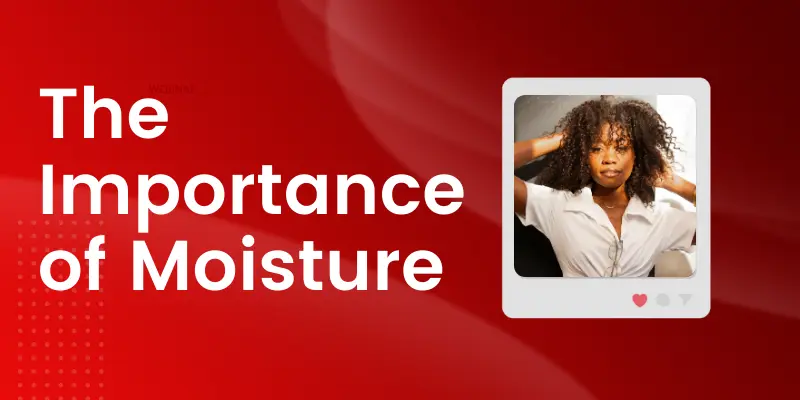
Now that you’ve seen the role moisture plays, let’s explore how to keep your hair hydrated with the right products, techniques, and brushing habits.
Why Coily Hair Needs Extra Hydration
- Moisture is everything. Without it, coils become dry, stiff, and dull. Hydration brings bounce, softness, and shine.
Best Moisturizing Ingredients
- Look for products with:
- Shea butter
- Coconut oil
- Aloe vera
- Avocado oil
- Use sulfate-free shampoos and conditioners, and follow up with a deep conditioner once a week.
Detangling Without Stress
Detangling without stress starts with patience, the right conditioner, and gentle strokes using Hair Brushes designed for different types of hair. This prevents breakage and keeps your strands smooth and healthy.
Tools and Techniques That Work
- Detangle with fingers or a wide-tooth comb
- Only detangle when hair is wet and conditioned
- Always work in sections
- Start from the ends to the roots
Be patient. Rushing causes unnecessary breakage.
Choosing the Right Products
Choosing the right hair products is key to maintaining healthy, manageable hair. The image below highlights essential product types for different hair needs, including eco-friendly hair products, all of which work best when used with the proper Hair Brushes.

Now that you’ve seen which products suit specific hair concerns, let’s explore how to build a routine tailored to your hair type and goals.
Essentials for Coily Hair
- Sulfate-free shampoo
- Moisturizing conditioner
- Leave-in conditioner
- Curl-enhancing cream or gel
Look for nourishing ingredients like:
- Argan oil
- Jojoba oil
- Marshmallow root extract
Test different products to find what works best for your unique hair texture.
Protective Styling Techniques
Protective Styling Techniques
Low-Manipulation Styles
- Braids
- Twists
- Buns
These styles help reduce daily breakage and stress on the scalp. Make sure they’re not too tight to avoid tension damage.
Nighttime Protection
Sleep with a:
- Silk or satin scarf
- Satin bonnet
- Or use a silk pillowcase
This reduces friction and moisture loss overnight.
Influence of Diet and Nutrition
Healthy hair starts from within, and what you eat plays a major role in its strength, growth, and shine. The image below shows how nutrient-rich foods for healthy hair growth, when combined with proper hair care and Hair Brushes, contribute to overall hair health.
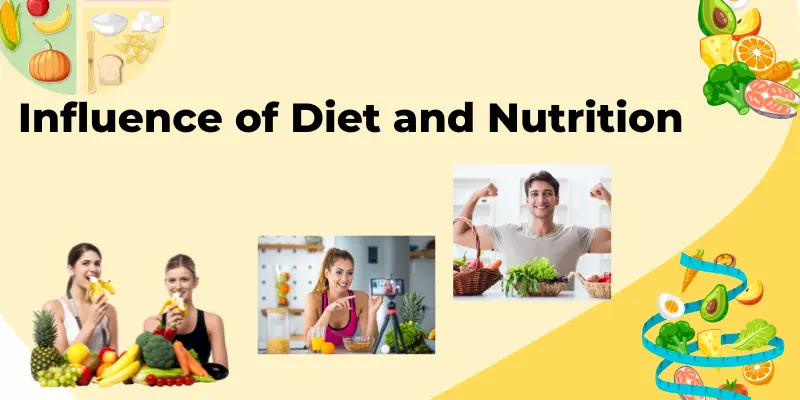
Now that you’ve seen how diet impacts your hair, let’s look at the key vitamins, minerals, and foods that support stronger, healthier strands from the inside out.
Eat for Stronger Hair
A healthy diet leads to healthier hair. Include:
- Biotin (eggs, almonds)
- Iron (leafy greens)
- Zinc (seeds, nuts)
- Omega-3s (fish, chia seeds)
And don’t forget to drink plenty of water. Hydrated scalp = happy coils.
DIY Hair Masks for Coily Hair
The best part about DIY hair masks for coily hair is that they often include rich ingredients like avocado, coconut oil, and honey to restore moisture and define curls. Applying them with Hair Brushes ensures even coverage and better absorption.
Try This Simple Avocado Mask
Ingredients:
- 1 mashed avocado
- 1 tablespoon coconut oil
- 1 tablespoon honey
How to Use:
Apply to damp hair. Cover with a cap. Leave on for 30 minutes. Rinse thoroughly.
Use weekly to restore moisture and shine.
Experiment with Other Natural Blends
Try banana, yogurt, egg yolk, or olive oil. Customize based on what your hair responds to best.
Styling Tips for Defined, Bouncy Curls
For defined, bouncy curls, apply a lightweight curl cream to damp hair and use a diffuser on low heat. Detangle gently with Hair Brushes designed for curls to maintain shape and bounce.
Embrace Your Natural Texture
Let your hair air-dry slightly before applying styling products. This helps prevent frizz and improves curl definition.
Try These Styling Tools
- Diffuser attachment on a blow dryer
- Braid-outs and twist-outs
- Perm rods for varied curl shapes
Avoid These Common Coily Hair Mistakes
Avoiding harsh shampoos, excessive heat, and dry brushing is key to protecting coily hair. Use moisturizing products and the right Hair Brushes to keep curls healthy and defined.
Too Much Heat
Using flat irons and curling wands without protection leads to damage. Always apply a heat protectant or avoid heat altogether.
Over-Washing
Washing too often strips natural oils. Aim for once a week or every two weeks, depending on your hair needs and lifestyle.
Skipping Regular Trims
Trimming split ends helps retain length and keeps your curls looking fresh and healthy.
Establishing a Hair Routine That Works
Establishing a hair routine that works starts with understanding your hair type and its specific needs. Consistent care with nourishing products and suitable Hair Brushes leads to healthier, more manageable hair.
Build a Simple Weekly Regimen
- Cleanse gently
- Condition deeply
- Moisturize regularly
- Style and protect
Your hair may need adjustments based on weather, products, or lifestyle changes, so stay flexible and observant.
Engaging with the Coily Hair Community
Engaging with the coily hair community offers support, product tips, and real-life styling inspiration. Sharing experiences and hairbrush recommendations can help others embrace and care for their natural texture.
Learn from Others Like You
Join forums, social media groups, or attend natural hair events. Sharing experiences can:
- Teach you new techniques
- Introduce you to new products
- Help you feel supported
Coily hair is a journey, and community can make it more joyful.
Final Thoughts
Coily hair is bold, beautiful, and uniquely yours. When you understand its structure and give it the care it deserves, it thrives. Stay consistent, stay patient, and celebrate your curls at every stage.
Your coils are not a challenge; they are your crown.
FAQ Coily Hair Care
Coily hair should generally be washed every 1–2 weeks to help maintain moisture and prevent dryness. Unlike straight or wavy hair, coils don’t get oily quickly, so frequent washing can strip away natural oils. Adjust your wash routine depending on your scalp health, activity level, and product use. Gentle cleansing with sulfate-free shampoos or co-washing helps keep hair clean without weakening strands.
Yes, you can use heat, but it should be limited and always done with caution. Coily hair is more prone to dryness and breakage, so high heat can cause lasting damage. If you do use hot tools, always apply a heat protectant and keep temperatures on the lower side. Air-drying or trying heatless styles like braids, twists, or flexi rods are healthier alternatives.
Moisture is essential for coily hair, so look for natural ingredients like shea butter, coconut oil, jojoba oil, and aloe vera. These nourishing strands lock in hydration and reduce breakage. Protein-rich treatments and biotin can also strengthen coils, while omega-3s support scalp health. Avoid sulfates, parabens, and drying alcohols, as they strip away natural oils.
No, your natural curl or coil pattern is determined by genetics and cannot be permanently changed without harsh chemical treatments. However, protective styles such as braids, twists, or Bantu knots can temporarily stretch or reshape your coils. Heat styling can also loosen curls, but frequent use risks damage. The healthiest approach is to embrace and enhance your natural texture.
Building a routine for coily hair requires consistency, patience, and the right balance of moisture and protection. Many people follow the LOC (Liquid, Oil, Cream) or LCO (Liquid, Cream, Oil) method to lock in hydration. Adjust your products based on your climate—humid environments may need lighter products, while dry climates benefit from richer creams. Regular trims and protective styles also help maintain coil health.
Coily hair, often categorized as Type 4, features very tight curls, zigzag shapes, or dense spirals. It is usually drier and more fragile because natural oils from the scalp struggle to travel down the strands. Coily textures are common in African and Afro-Caribbean hair types but can be found worldwide. With proper care, coils can look incredibly healthy, defined, and versatile.
The main difference lies in the curl shape and moisture needs. Curly hair tends to form looser, bouncy S-shaped spirals and usually retains moisture more easily. Coily hair, on the other hand, forms tighter corkscrews or zigzag patterns, making it more prone to dryness and shrinkage. Because of this, coily hair often requires richer products and gentler handling.
You can usually tell by the pattern of your strands. If your hair forms tight “Z” shapes, shrinks significantly when dry, and feels more fragile, it’s likely coily. Wavy hair, however, has looser “U” or “S” patterns with less shrinkage. Observing how your hair behaves when wet versus dry is one of the best ways to distinguish the two.
4B hair has tightly coiled strands that bend in a zigzag “Z” shape with some definition. 4C hair, however, has the tightest coils with very little visible curl pattern and can shrink up to 75% of its length. Both types are beautiful but need different care approaches. 4C hair, in particular, requires extra moisture, gentle detangling, and protective styling.
Coily hair is typically categorized into three main subtypes: 4A, 4B, and 4C. Type 4A features well-defined, springy coils, 4B has “Z”-shaped strands with less definition, and 4C has the tightest, most densely packed coils. While these categories are helpful, it’s more important to understand your hair’s unique needs rather than focusing only on labels.

- Be Respectful
- Stay Relevant
- Stay Positive
- True Feedback
- Encourage Discussion
- Avoid Spamming
- No Fake News
- Don't Copy-Paste
- No Personal Attacks

- Be Respectful
- Stay Relevant
- Stay Positive
- True Feedback
- Encourage Discussion
- Avoid Spamming
- No Fake News
- Don't Copy-Paste
- No Personal Attacks

